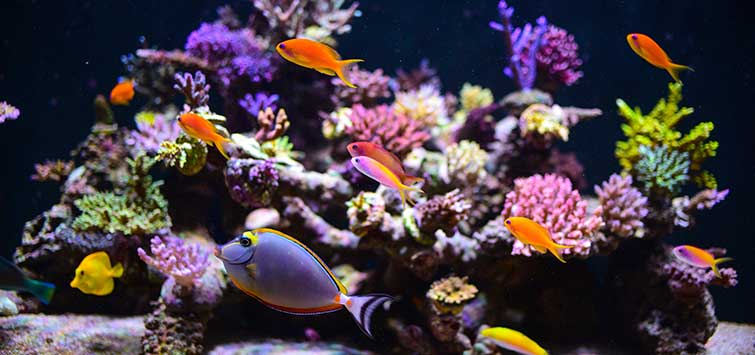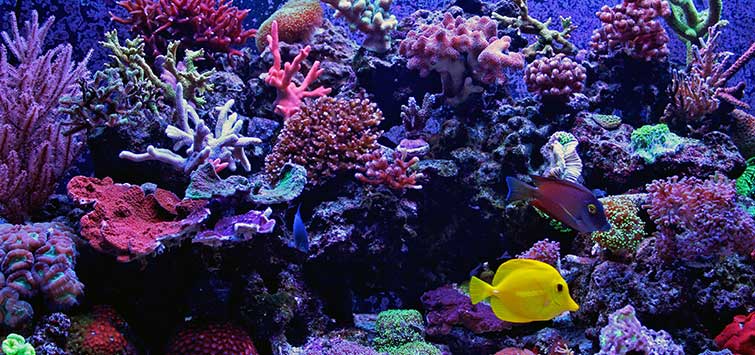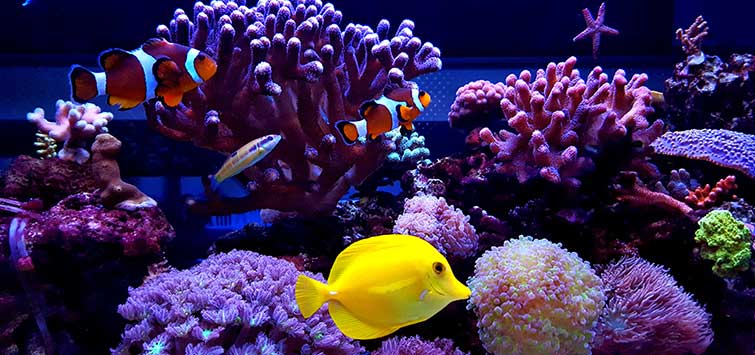Salt Mix
Modern salt mixes are the product of years of research, and they provide the same results as natural seawater—or better.
Why Choosing a Quality Salt Mix Matters
- A salt mix is the easiest and safest source for water for the aquarium and is superior to natural sea water. The buffers help maintain the proper pH, and many have additional calcium and other substances to deal with the needs of captive reef invertebrates.
- In the ocean, as a substance is removed from the water, billions of additional gallons are available to replenish that substance. In your tank, the supply of certain dissolved substances can become severely depleted between water changes. In a healthy reef tank with rapidly growing stony corals and tridacnid clams, the demand for calcium can be so high that no salt mix alone can meet it. Such a system can require almost constant supplementation, as with a calcium reactor or kalkwasser dosing pump.
- Regular “salt” is sodium chloride. While sea water contains a high concentration of this salt, it also contains significant amounts of many other salts, as well as tiny but very important quantities of still other salts. It is not just salty; it is a precise mix of a great many chemicals, all of which should be present in an artificial replacement. Marine creatures are adapted to this precise environment, and they rely on many of the chemicals for their health and vitality. They may survive for a while in water of the proper salinity but with a different chemical makeup, but to thrive they need not only the correct amount of salt, they also need the specific salt makeup of the ocean.
- Salt mix is also appropriate for brackish setups. The closer to full marine the conditions are, the more vital it is to have the proper sea-like proportions of the various salts.
How to Properly Mix Salt
- The manufacturer’s directions use approximate measurements; check the solution for proper salinity and add more salt mix or more fresh water to adjust the salinity. Make sure all salt is completely dissolved before determining the salinity.
- Use reverse osmosis (RO) or distilled water; this way you start with no dissolved substances, and the proper makeup of the salt mix is maintained.
- Never mix the salt in the aquarium.
- Add salt to a bucket of water, rather than putting the salt in first and then filling the bucket; this prevents unwanted precipitation.
- Mix up salt water a day or two in advance and keep a powerhead or airstone in the bucket to ensure complete dissolving and mixing.
How Salinity Is Measured
Salinity, the amount of salts dissolved in water, can be measured directly with a refractometer, which evaluates the refraction of light through a tiny water sample. You can read the per mil value directly off the display. “Per mil” refers to parts per thousand, and the symbol is a percent sign with an extra zero: ‰. Seawater has 35 parts per mil of salt, 35‰, which is how you will see it written in older texts. Since salinity is a proportion, however, it is now expressed without units: a salinity of 35.
Less precise but still useful measurements can be made with a hydrometer, which actually measures specific gravity, or density. Pure water weighs precisely 1000. grams per liter, for a specific gravity of 1.000. As salts are added, the density of the water increases, and a liter weighs slightly more. Seawater has a specific gravity of 1.025. Glass floating hydrometers are losing favor to plastic swing-arm versions, which are much easier to read—and don’t break as easily. Make sure there are no air bubbles on the arm, giving a false reading.
Advice for Topping off Your Tank
- Topping off refers to adding fresh water to replace water lost from evaporation. Since only water evaporates, leaving all dissolved salts behind, the water gets saltier, and you need to replace the evaporation with fresh water to maintain the proper salinity. Use RO water for topping off, otherwise you are adding minerals with the replacement water.
- You can take a marker and indicate on the glass the original water level. You should still use a hydrometer or refractometer to make sure the salinity is correct, but the marking gives you a general idea. While salt does not evaporate, it is lost in small amounts via “salt creep”—the encrusting of salt on and around the aquarium as splashes evaporate.
- Do not confuse topping off with a water change. When you replace evaporated water, you do nothing to remove the accumulated wastes in the aquarium. To accomplish this, you must siphon out a portion of the water and replace it with new salt water. Regular partial water changes are vital maintenance for any aquarium, fresh or marine.
Keep Standby Water
Instead of delaying a water change until the salt water is mixed, should I keep some standby water? How should I do that? Gary Shepard (Fairchild, Wisconsin)
It is certainly desirable to have a supply of sea water of proper pH, salinity, and temperature. A clean, covered plastic trash can is ideal for storing sea water, and a small powerhead and a heater will keep the water ready for a change.

.png?h=595&iar=0&w=2781&hash=5FD5E69473BCC22199FBFA2FB71B6033)



